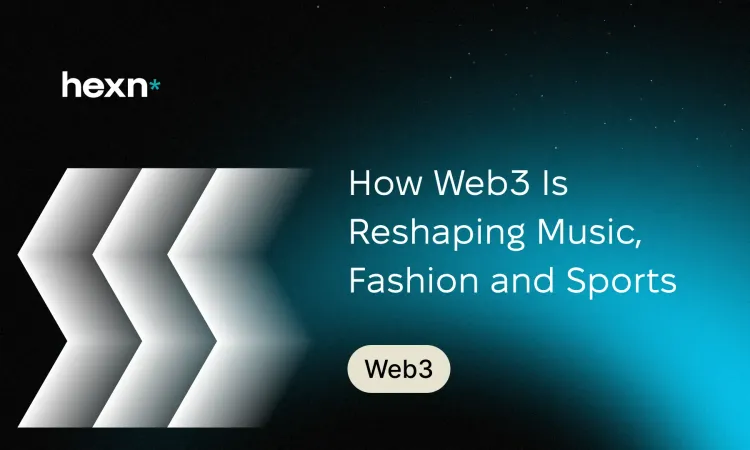What Web3 Means for Entertainment
Web3 is the next phase of the internet built on blockchain technology that emphasizes decentralization, digital ownership, and direct user control of data. For creative industries, this shift offers new ways to sell rights, reward communities, and build direct revenue streams without traditional intermediaries. That combination of ownership and new monetization paths explains why musicians, fashion designers, sports organizations, and their audiences are paying attention.
Why Companies and Creators Are Exploring Web3 Strategies
Brands and individual creators are attracted to Web3 because it enables transparent record-keeping, provable digital scarcity, and programmable transactions. These features make it possible to link real-world experiences or goods to digital assets that fans can truly own. In practice, these capabilities open up fresh marketing channels, premium fan experiences, and alternative business models that were difficult to implement under older web paradigms.
Practical Benefits that Draw Interest
- Verified ownership: Digital items can be uniquely identified and tracked on-chain, which helps creators prove provenance and protect intellectual property.
- New revenue mechanics: Tokenization, royalties coded into smart contracts, and direct sales let creators capture value that previously went to middlemen.
- Deeper engagement: NFTs and tokens can function as membership passes, gated access to events, or collectibles that strengthen fan loyalty.
How Web3 Is Changing the Music Industry
Music distribution has already moved from physical media to streaming, and Web3 offers the next wave of change. By recording rights and royalty splits on a blockchain, musicians and rights holders can create immutable ownership records and automate payments via smart contracts. This reduces friction in royalty distribution and can make splits between collaborators fairer and more transparent.
New Creator Workflows and Monetization
Some Web3 platforms allow instrumental tracks, stems, or beats to be sold as digital assets. When a purchaser mints or buys such an asset, they can receive specific rights or revenue shares tied to that work. These models let independent artists monetize directly, launch collaborative projects as tokenized assets, and experiment with open or community-owned music projects.
How Web3 Is Transforming Fan Engagement in Sports
Sports organizations and athletes are using blockchain to create collectible digital memorabilia, power fantasy sports with tradable player cards, and issue tokenized experiences for fans. These applications give supporters new ways to participate, compete, and own pieces of their favorite teams.
Examples of Sports Use Cases
- Digital collectibles: Athlete cards and memorable highlights can be minted as unique tokens that fans buy, trade, and use in games.
- Fantasy and tournaments: Tokenized lineups and team rosters enable competitive play where ownership of assets has real value.
- Event ticketing: Smart contracts can reduce fraud, simplify resale rules, and embed royalties for secondary sales.
How Web3 Is Impacting Fashion and Supply Chains
Fashion brands are experimenting with digital garments, limited edition drops tied to NFTs, and on-chain supply chain records. These approaches create opportunities for brands to offer collectible digital wearables, authenticate luxury items, and give customers clearer information about where and how a product was made.
Transparency and Anti-Counterfeit Advantages
Recording provenance and production details on a blockchain can make it harder to pass off counterfeit goods and easier to verify sustainability claims. When every step from material sourcing to retail is logged immutably, consumers gain a clearer picture of a product's journey. That said, the system depends on accurate and consistent on-chain inputs from everyone in the supply chain.
Main Challenges and Adoption Barriers for Web3 in Creative Industries
Despite promising use cases, Web3 adoption faces several practical obstacles. Building and maintaining blockchain-based systems requires technical skill and investment, which can be costly. Smaller creators or boutique brands may find hiring developers and launching tokenized projects prohibitive.
User Familiarity and Cost Considerations
- Learning curve: Most people have limited exposure to wallets, tokens, and blockchain transaction workflows, which makes user experience a crucial hurdle.
- Development costs: Implementing robust Web3 solutions often involves hiring specialized teams and paying infrastructure fees.
- Network participation: Supply chain tracking and provenance systems only work if all participants reliably add accurate data to the ledger.
Final Takeaways
Web3 is not a magic bullet, but it offers concrete tools for improving ownership transparency, enabling new revenue models, and building closer relationships between creators and audiences. Expect incremental rollouts: early experiments in music, sports, and fashion will inform best practices, while usability and cost improvements will determine how widely these ideas scale.
For creators and brands, the most practical approach is to start with clear goals—whether that is increasing direct sales, improving provenance, or deepening fan loyalty—and test tokenized models that align with those objectives. Over time, successful pilots can evolve into sustainable, community-driven revenue channels.
